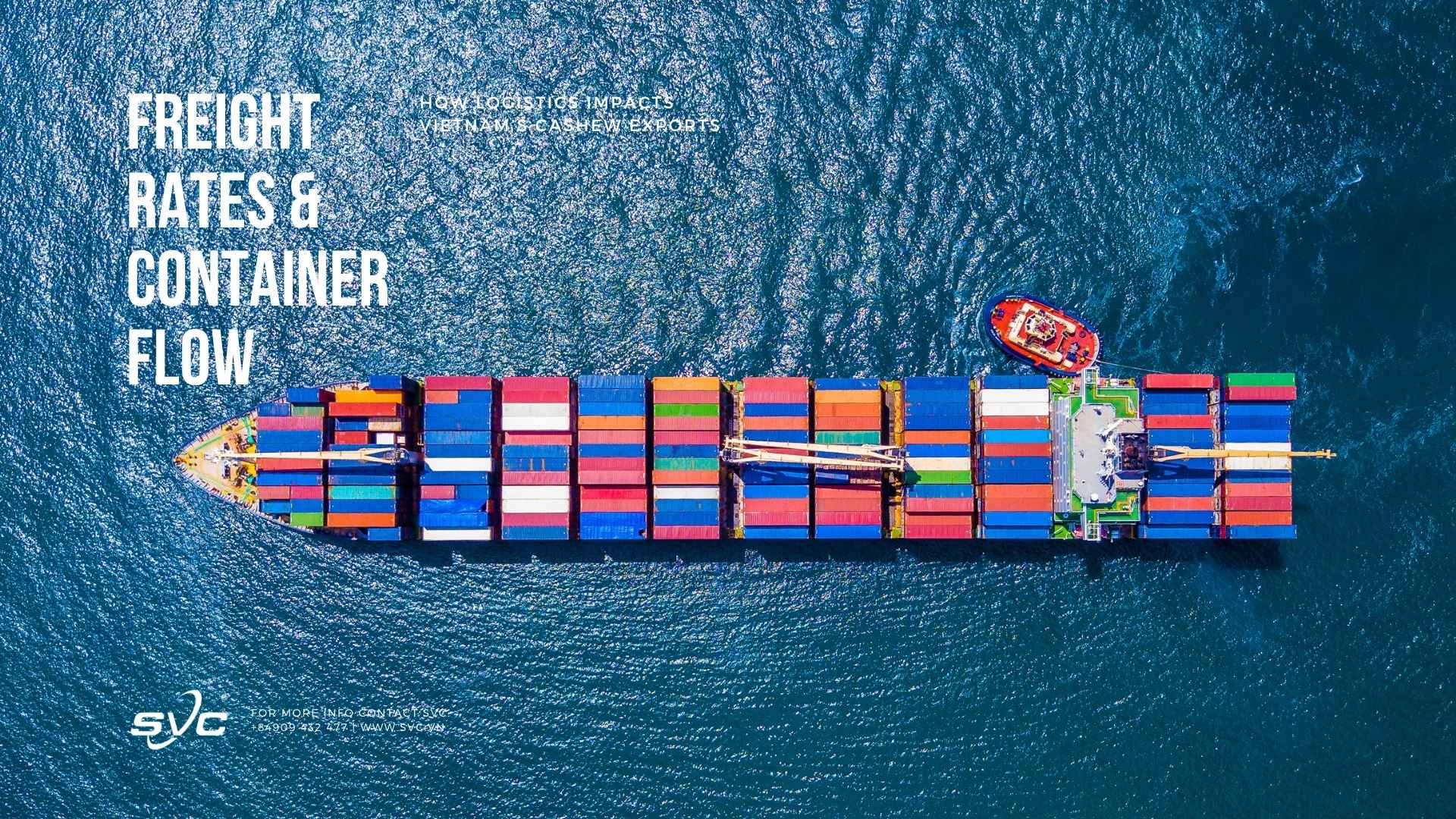As Vietnam enters the peak export period of Q4/2025, logistics has become one of the most influential factors determining the competitiveness of cashew exporters. While global demand for cashew kernels remains strong, fluctuations in freight rates, container availability, and shipping schedules continue to impact export planning and profitability.
Vietnam — the world’s largest cashew exporter — must navigate these logistics pressures to maintain its market leadership.
📦 Freight Rates Remain High but More Stable
Industry data from Drewry Shipping Index and forwarders in Ho Chi Minh City indicate that freight rates in mid-November 2025 are still significantly higher than pre-pandemic norms, although more stable compared to Q3.
Key lanes (Nov 2025):
- HCMC → U.S. West Coast: still elevated due to vessel congestion and strong retail demand
- HCMC → Europe (Rotterdam, Hamburg): stable but 12–18% higher YoY because of carbon-related surcharges
- HCMC → Middle East: moderate but rising 5–7% due to increased demand for food commodities
Additional factors keeping costs high:
- Environmental surcharges (EU ETS & carbon fees)
- Increased bunker adjustment factor (BAF)
- Peak season congestion at transshipment hubs (Singapore, Port Klang)
While the rate of increase has slowed, exporters — especially cashew processors with tight margins — remain cautious.
📦 Container Availability Improves but Remains Uneven
Vietnam faced container shortages in late Q3/2025, particularly:
- 20ft containers for bulk kernels
- 40ft HC containers for PET jars and retail shipments
By November:
- Availability has improved
- Imbalances at major ports still cause 2–4 day loading delays
- Some carriers prioritize high-value cargo, pushing food exporters to later sailings
These factors affect export schedules to Europe and the Middle East, where retailers require strict delivery timelines for holiday sales.
🌍 Impact on Vietnam’s Cashew Exporters
Logistics plays a direct role in:
✔️ FOB price competitiveness
Higher freight costs reduce exporters’ pricing flexibility in markets where Vietnam competes with India and Africa.
✔️ Profit margins
A 300–500 USD/container increase can significantly impact net margins for WW320 and LP shipments.
✔️ Inventory planning
Delayed sailings disrupt production cycles and tie up working capital for exporters.
✔️ Buyer relationships
Late deliveries risk penalties with major retail and industrial buyers — especially in EU and U.S. markets.
🏭 How SVC Ensures Stability Amid Logistics Volatility
SVC International JSC has implemented a proactive logistics framework to ensure reliable export performance, even during peak season:
1. Long-term contracts with carriers & forwarders
SVC negotiates rate stability and priority loading for key markets.
2. Optimized loading plan
Maximum carton utilization per container reduces logistics cost/kg for buyers.
3. Multi-port flexibility
Using both Cát Lái and Cái Mép – Thị Vải helps minimize congestion delays.
4. Advanced scheduling & shipment visibility
Buyers receive updated ETD/ETA and documents in advance, reducing warehouse and retail risks.
5. Certifications & packaging compliance
SVC ensures global buyers face zero compliance issues, reducing customs delays.
Through these steps, SVC continues to deliver on-time shipments to over 63 countries, reinforcing trust with global partners.
📈 Outlook for Late Q4/2025
Logistics pressures are expected to continue through December due to:
- Year-end demand spikes
- Increased vessel utilization
- Higher insurance premiums on certain routes
However, stable RCN supply and balanced export orders help Vietnam maintain healthy processing levels. Exporters with strong logistics infrastructure — such as SVC — are best positioned to maintain stable supply, predictable pricing, and on-time delivery for global buyers.
📧 Contact for OEM & Export Coordination: thanh@svc.vn
📱 WhatsApp: (+84) 909 432 477
🌍 Think Cashew Vietnam, Think SVC.

